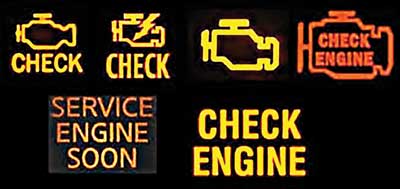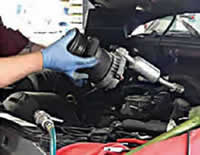
The key to a car running at its best is basic maintenance. Keeping up with fluid changes, tire checks, filter changes and other services will help avoid bigger and more expensive repairs. Over time, some car parts and components wear out or become damaged. Being aware of your car will help you address any issues before they become bigger problems.

Tires are your car’s critical connection to the road and can affect your ride, handling, traction and safety. Maintaining tire balance and wheel alignment reduces tire wear and improves handling and fuel economy.
Tire replacement is necessary if the tread depth is below the minimum legal requirement, or the sidewalls are severely cracked or punctured. In some cases, tread punctures cannot be repaired. Normal wear and road conditions can take their toll on your car’s steering and suspension system, and can disrupt the alignment settings. Ball joints, tie rods, steering arms, bushings and other suspension parts all wear gradually over time. Springs will gradually sag and age as miles accumulate. All of these will affect alignment angles and adjustments need to be made or components replaced to restore optimum handling.
What type of tires should go on my vehicle based on my driving?
What can happen if I install a set of tires having a size not recommended for my car?
Why does my car shake at certain speeds?
Can my driving habits affect tire life?
Do tires have to be replaced in pairs?
Is this a four-wheel alignment?
..................................................................................................................................................................
In 1996, an orange light on your car’s dashboard labeled “Check Engine” or “Service Engine Soon” became standard on all car makes and models. The light tells you there’s a problem with your car’s engine and powertrain control system.


An illuminated “Check Engine” or “Service Engine Soon” light indicates that a vehicle system, such as the ignition, fuel injection or emission control, is not operating properly, even if the vehicle appears to be running normally. Only the right diagnostic equipment can determine the problem detected by your car’s on-board diagnostic system (OBD). Ignoring a check engine light can negatively impact your fuel economy or cause damage resulting in more costly repairs.
When checking out the cause of the light, are there any other services that need to be performed at the same time?
Is it normal for the light to come on briefly when I start my car?
What happens if I just ignore the light?
Will the light eventually turn off by itself?
Will my car pass an emissions test if the light is on?
Are you trained and certified in OBD II diagnosis and repair?
................................................................................................................................................................

Your car’s heating, ventilating and air conditioning system (HVAC) keeps your car interior comfortable in any season by providing the right temperature and humidity level. The HVAC system also helps improve defroster operation.
Proper heating and cooling performance is critical for interior comfort and for safety reasons such as defrosting. The HVAC system will work as designed if properly serviced.
What happens if I continue to use my car’s A/C system, even though it’s not cooling properly?
Water drips underneath my car when I use the A/C system. Is this normal?
A musty odor comes out of the A/C vents at times. Can anything be done about this?
My car’s A/C system seems to cool intermittently and I hear a clicking on and off from underneath the hood. What does this mean?
..............................................................................................................................................................
Keeping a vehicle looking new is tough, even with today’s long-lasting finishes. Dents, dings, cracked glass and dirty upholstery are several items that age the appearance of a vehicle. Fortunately, technology and advances in vehicle protectants have helped rectify these problems, making the fixes quicker and less expensive.

Caring for your car’s appearance helps you protect your investment. Appearance problems left unattended, like breaks in glass or body damage, can lead to larger problems and repairs.
How do I get my tires to have a shine?
What can I use to remove small scratches in the paint?
Why shouldn’t I wash my car with dishwashing soap?
About the Car Care Council: The Car Care Council is a non-profit organization dedicated to educating motorists about the importance of regular vehicle care, maintenance and repair through its “Be Car Care Aware” consumer education campaign.